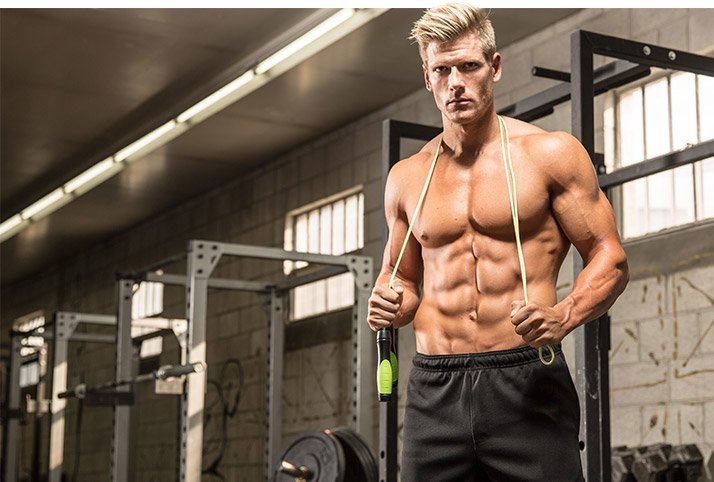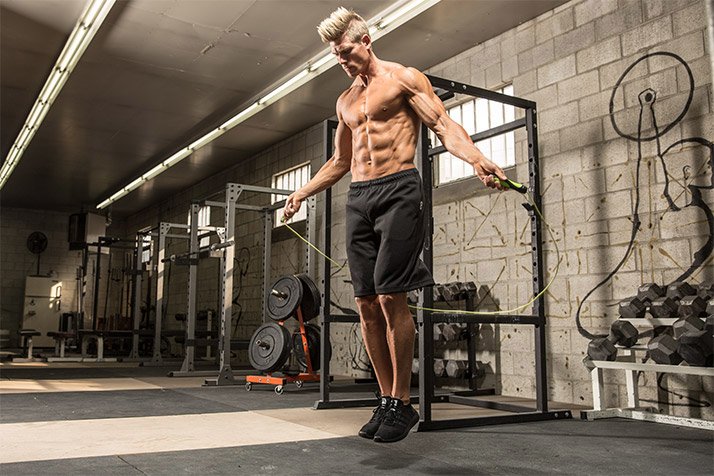
How To Master The Double-Under
Don't let the CrossFitters have all the fun! The double-under is a movement that belongs in every athlete's toolbox. Here's how to get there, in 3 foolproof steps!
Athletes of all types know that the jump rope is one of the best—but tragically underutilized— pieces of fitness equipment. It's powerful, versatile, and cost-effective, and nothing is easier to store. Just hang on the wall or put it in your gym bag, and you're never far from a great workout.
But as many of us have discovered as adults, jumping rope to improve your fitness can be a lot different than jumping on the school playground. Sure, you can benefit from the "jump for a while until you feel done" approach, but sooner or later, you'll benefit from having a goal to progress toward.
If you're looking for a rope goal, I've got one for you: the double-under. Or more specifically, a few double-unders strung together into a graceful series. Let's jump right in.
Mastering Double Unders with Crossrope
Why Double-unders?
Double-unders have been popularized in recent years by CrossFit, but of course it's been around a lot longer. As long as top athletes and fighters have been using jump ropes in their training—which is a long time—they've been mixing single jumps with doubles.
They've known that aside from the obvious conditioning and fat-loss benefits that come along with jumping rope, double-unders can help improve:
- starting speed
- overall speed
- coordination
- accuracy
- power
- endurance
- bodily control
- strength, particularly if you use weighted ropes

Unlike other power-building movements, the double-under can also be easily integrated into a wide range of training styles. It's at home in a high-intensity circuit, but equally effective alongside heavy lifting or bodyweight exercises. No matter where or when you do them, double-unders will keep your heart rate elevated and give you a potent workout in a short duration. And yes, you'll burn plenty of calories and fat along with reaping all those other athletic benefits.
But like many great athletic movements, the double-under is best approached progressively. Here are the steps that will help you master it.
Step 1 Master the single jump
Most individuals don't properly learn regular jumping technique before trying to move on to more challenging skills. The first place to look for problems is almost always the knees. It's important to bound lightly with minimal knee bend. Done properly, the soles of your shoes should not leave the ground more than 1-2 inches.
The arms are the next place to look. Make sure that you are generating rope rotation with nice, easy wrist movement. Many novices use excessive arm movement and rotate the rope with their elbows and shoulders. This is a much slower technique, making it difficult to get the rope around twice on one bound.
Your wrists should be positioned approximately one foot to each side of your hips. If you're having trouble getting them out there, make sure your rope is the right length. Your height and experience level both play a part in how long your rope should be. At CrossRope, we offer a calculator to help you find the perfect fit.
Step 2 Build up to a "power bound"
Once you have your single jumps locked down, try adding a single extra-powerful jump at the end of a series. I call this a "power bound."

Don't just try to jump high right away. Instead, gradually accelerate your wrist rotation over the course of a few jumps, while maintaining your posture. Then go into a power bound, focusing on pushing through your ankles with minimal knee bend. This extra bound height gives you the chance to perform two quick rotations with your rope.
Step 3 String together a few double-unders
Once you're able to get one double-under without any trouble, try stringing together two, then three. In time, see how many you can get in a row. Don't give up on single jumps, because they're still the foundation of your technique. Maintain the same balance and soft landing style that you did in Step 1, but be able to make a power bound each time with enough height to rotate the rope twice.
Double the Fun
A final word on ropes: Until you can feel and control the rope, lighter is not better. Avoid super-light wire speed ropes as a beginner, and consider a slightly heavier rope that will give you more feedback. Wire is faster than PVC once you have the hang of double-unders, but it also stings more. Be warned!
With the right rope, traditional boring cardio is a thing of the past. Embrace the challenge of the double-under!
